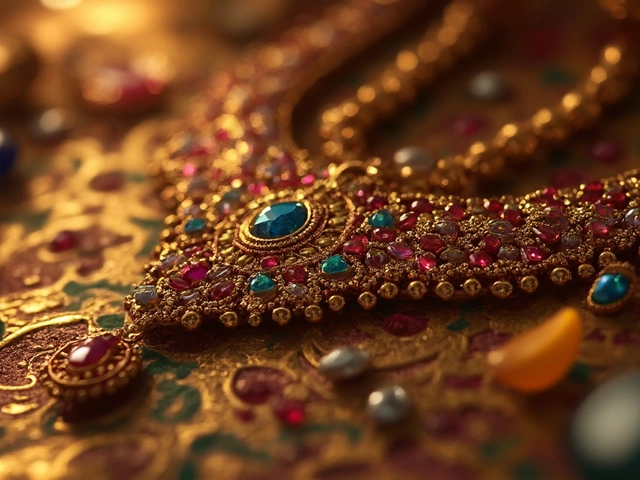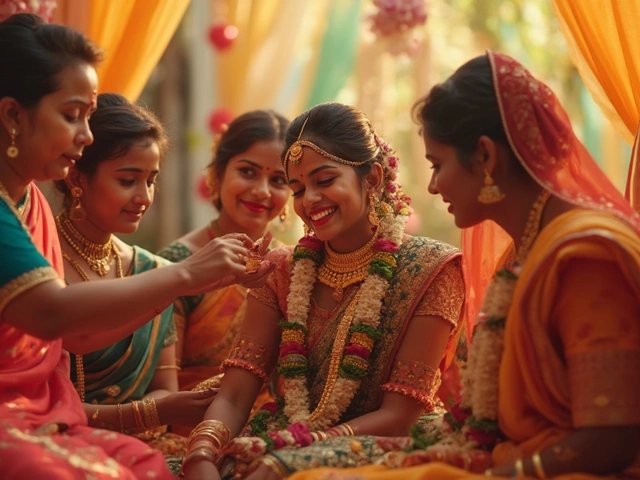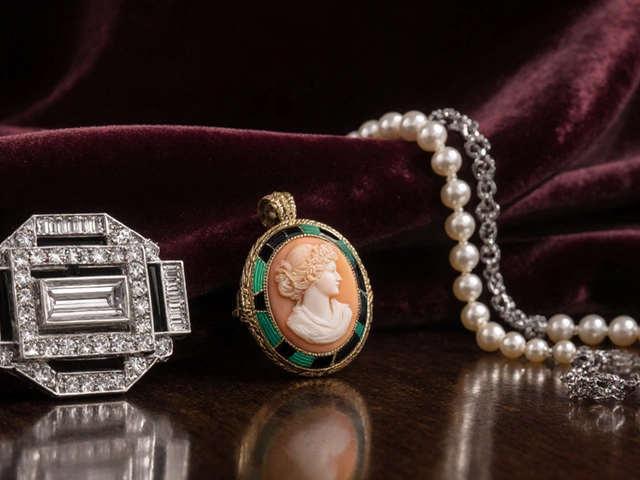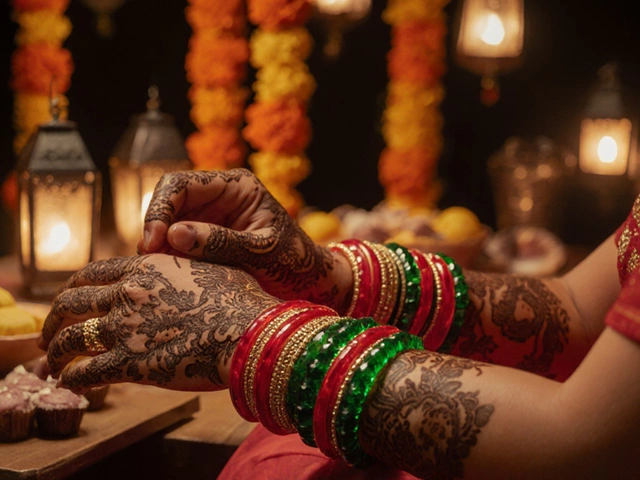
Think nose pins are just about looks? There’s a lot more to the story. From ancient rituals to modern street style, nose pins have carried all sorts of meanings. Some girls wear them because it’s a family tradition. Others pop one in for the sheer fun of changing up their vibe or making a bold statement.
Picking a nose pin isn’t just about grabbing whatever’s trendy. The shape of your nose, your style, and even your lifestyle come into play. Ever noticed how some girls go for a tiny stud while others love a flashy hoop? Each design says something unique. Some people believe wearing a nose pin, especially on the left, helps with things like easier periods or even boosts confidence. Sure, there’s debate, but that hasn’t stopped the tradition in places like India or the Middle East.
- The Cultural Roots of Nose Pins
- Symbolism and Traditions
- Popular Nose Pin Designs
- Modern Trends and Celebrity Influence
- Choosing the Right Nose Pin for You
- Health and Care Tips
The Cultural Roots of Nose Pins
Nose pins have been part of human style for centuries, mostly showing up in South Asia, the Middle East, and some parts of Africa. But this isn’t just about fashion—nose pins actually have deep cultural roots. In India, wearing a nose pin can be traced back over 4,000 years. It was believed to bring good luck, mark marital status, or even show off social status. Even now, in Hindu weddings, the bride almost always rocks a nose pin as part of her traditional jewelry.
There’s some wild variety in where you’ll see nose pins and what they mean. For example, in rural Maharashtra, brides wear a big, flashy nath (their version of nose pins). Over in Pakistan and Nepal, it’s also common for women to pierce their left nostril, as it’s thought to connect to female health. Some people claim it makes childbirth easier! That’s not proven science, but it’s a strong belief.
If you ever wondered if this trend is just for show, check out this quote from Dr. Vandana Bhandari, an expert on Indian traditions:
"The tradition of nose piercing is not merely ornamental. It carries deep social and symbolic meaning, especially related to feminine identity and marital status."
Religious ties pop up too. In Islamic cultures, piercing is sometimes connected to coming-of-age rituals. Nose pins even make appearances in Ayurvedic medicine as a way of promoting female well-being.
| Region | Common Reason for Nose Pins |
|---|---|
| India | Marriage, health, tradition |
| Middle East | Social status, beauty |
| Africa | Tribal identity, beauty |
So, when girls wear nose pins today, they’re usually tapping into something much bigger than just a new accessory. That tiny stud or hoop links them to generations past, with plenty of meaning packed into that one small piece of metal.
Symbolism and Traditions
When you see a girl rocking a nose pin, there’s often more behind it than just fashion. In places like India, Nepal, and Pakistan, nose pins play a big role in culture and tradition. Take India for example—girls usually get their left nostril pierced as part of a coming-of-age ritual. Some families believe that piercing the left side is linked to easing period pain and making childbirth smoother. It sounds wild, but this idea actually comes from ancient Ayurveda, a type of traditional medicine that’s been around for thousands of years.
In some parts of the world, nose pins are connected to marriage and status. Brides wear big, decorative pairs called nath on their wedding day—it’s not just for looks, but to show their new role as a married woman. In the Middle East, nose pins also signal marriage or family pride, while in Africa, some tribes use them to mark special milestones or show off their social rank.
Here’s a fun fact: Back in the 16th century, nose pins landed in India with the Mughals and then spread everywhere. By the 20th century, piercing your nose became a quiet act of rebellion in places like the West, especially during the punk movement.
| Region | Main Symbolism |
|---|---|
| India | Family tradition, health, marriage status |
| Pakistan | Cultural pride, beauty, marital status |
| Middle East | Marriage, family pride |
| Africa (some tribes) | Coming of age, social rank |
So, whether it’s to honor family, signal a new stage in life, or just own their style, girls wear nose pins—and every tiny stud or hoop tells a bigger story. It’s not just jewelry. For some, it’s a badge that means way more than meets the eye.
Popular Nose Pin Designs
If you’ve ever looked at the options for nose pins, you know it’s not a one-size-fits-all deal. The variety’s huge—there’s something for every face shape, skin tone, and personal style. Some classic styles stick around for decades, while some fresh trends pop up every season. Let’s break down the ones you’ll see most often:
- Studs: The most common and beginner-friendly nose pin designs. They’re small, easy to wear, and stay put. Gold and silver studs never go out of style, but you’ll find diamond, gemstone, and colored options too.
- Hoops: Also called rings, hoops wrap around the nostril and make a bolder statement. Some are thin and subtle, while others are thicker and more eye-catching. In India, you might see brides wear oversized hoops called ‘naths’ for special occasions.
- L-shaped Pins: These come with a bend at the end, so they’re less likely to fall out. They’re practical if you want something low-maintenance.
- Screw-Type Pins: Big in South Asia, these twist into place and feel extra secure. You often see really ornate designs in this category, with shapes like flowers or vines.
- Septum Rings: Not technically a nostril piercing, but worth mentioning. These sit in the soft bit between your nostrils. Celebrities like Rihanna have made septum rings almost mainstream.
Materials matter, especially if you have allergies or sensitive skin. The safest bets are hypoallergenic options like medical-grade titanium or 14k gold. Cheap metals might look tempting, but they can cause irritation.
If you’re into numbers, here’s a snapshot of what’s trending in nose pin choices lately:
| Design Type | Popularity Percent (2025) |
|---|---|
| Studs | 38% |
| Hoops | 27% |
| L-shaped | 18% |
| Screw-type | 11% |
| Septum | 6% |
Whatever your pick, the right nose pin design does way more than just decorate your face—it can fit your whole vibe, show off your roots, or just keep up with what’s hot right now.

Modern Trends and Celebrity Influence
If you scroll through Instagram or TikTok, you'll see that nose pins aren’t just tucked away in tradition anymore. These days, they’re at the center of some of the hottest nose pin trends in fashion. From simple studs to weirdly shaped hoops, the options just keep growing.
Take celebrities—one good example is Zendaya, who’s been spotted with a slim, sparkling nose pin on the red carpet. Or consider Miley Cyrus rocking a subtle stud one day and switching to a chunky hoop the next. Even stars like Rihanna and Lady Gaga have used nose pin designs to switch up their look, making nose pins feel less like an accessory and more like a statement.
What’s interesting is how these celeb choices spark trends overnight. When a big name shows up with a new design or piercings on both sides, suddenly everyone wants to try it. Kylie Jenner’s nose ring pic in 2023 sent Google searches for "gold nose pins" soaring for weeks afterwards. And in South Asia, Bollywood stars like Alia Bhatt and Deepika Padukone often bring traditional nose rings into the global spotlight.
Right now, popular trends include diamond studs, septum rings, and lightweight gold hoops. Some folks go for quirky looks—like chain-linked pins or colorful gemstones—while others stick to classic elegant vibes. Thanks to social media, you can follow creators showing off different piercings and get real tips for mixing and matching various nose pin designs with different outfits or face shapes.
| Celebrity | Signature Nose Pin Style |
|---|---|
| Zendaya | Minimalist stud |
| Miley Cyrus | Mixed studs and hoops |
| Rihanna | Bold hoops |
| Alia Bhatt | Traditional Indian nath |
If you want to keep things current, check out trending hashtags like #NosePin or #NoseRingStyle. Just seeing what’s out there can inspire your next jewelry pick or piercing—no A-list stylist required.
Choosing the Right Nose Pin for You
If you’re going to get a nose pin, picking the right one makes all the difference. Don't just grab the first thing you see; check out what really fits your face and style. Your comfort matters, too, because a nose pin shouldn't poke, irritate, or make you feel weird during the day.
First, think about your face shape. Got a round face? Small studs or subtle nose pin designs usually work best. If you’ve got sharper features or a longer face, a larger hoop or a bolder design might look awesome. Also, consider where your piercing is placed. A high nostril piercing might suit a little stud, while lower on the nostril can pull off a hoop or dangly pin.
Now, let’s talk about material, because nobody wants a rash or an infection. The safest bets are usually surgical steel, titanium, or real gold. Nickel can be cheap but is notorious for causing allergies, so skip that if your skin is sensitive. Here’s a quick comparison:
| Material | Pros | Cons |
|---|---|---|
| Surgical Steel | Affordable, hypoallergenic | Not as flashy |
| Titanium | Super safe, lightweight | Pricey |
| Gold | Classic look, skin-friendly | Soft, can bend |
Pay attention to the gauge or thickness, too. Most nostril piercings use 18 or 20-gauge pins—the higher the number, the thinner the pin. If you use something too thick, it can stretch your piercing; too thin, and it may fall out easily.
Still stuck? Here are a few smart tips for zeroing in on your perfect nose pin:
- If you want something super low-maintenance, go for a tiny push-pin stud in surgical steel.
- Love bold fashion? Try a hoop with some sparkle or colored enamel for instant impact.
- Playing sports or gym fanatic? Choose a flat-back or screw-type design that won’t fall out easily.
A little effort in choosing your nose pin upfront keeps you looking good while steering clear of pain or drama later on. Don’t hesitate to try out a couple of temporary fake pins for a weekend before committing—for a lot of people, that’s now the easiest way to test a style without any risk!
Health and Care Tips
Getting a nose pin isn’t just about style—it’s about keeping your skin healthy and safe, too. Nose piercings need some care, especially right after you get them done. The most common issues? Infection, swelling, and unwanted bumps. But with the right habits, these are easy to avoid.
First off, always have your nose pierced with a clean needle—never a piercing gun. Needles are more precise and lower your chances of problems. After getting pierced, stick with high-quality metals like gold or stainless steel. Cheap metals often cause allergies or delay healing. Here’s a quick breakdown of how to care for your new nose pin:
- Clean with saline solution (not alcohol or peroxide) twice a day.
- Keep your hands off—no touching or twisting the pin unless you’re cleaning it.
- Avoid swimming pools for at least a week, since chlorine messes with healing.
- If you see redness or feel pain after the first week, check with a professional piercer or a doctor.
The average healing time for a nose piercing is 2-4 months, but it can vary based on how well you care for it. Don’t rush to change your nose pin before the area is fully healed—doing it too soon can set you back and even cause scarring.
| Common Issue | What Helps |
|---|---|
| Redness, swelling | Saline soaks, avoid bumping or snagging |
| Bumps or keloids | Don’t pick; use a saline solution; get advice if it doesn’t go away |
| Allergic reaction | Switch to hypoallergenic metals like stainless steel or gold |
Also, keep in mind if you’re into sports or rough activities, a stud is less likely to snag than a hoop. Once your piercing’s healed, clean your nose pin regularly to keep it looking as good as new and to prevent skin breakouts. Good hygiene and smart metal choices go a long way, whether you’re rocking a tiny stud or the fanciest nose pin design out there.








